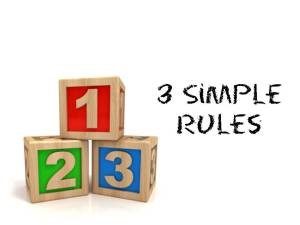Although lowering your monthly mortgage payment is always attractive, don’t let a slightly lower mortgage rate fool you. If you’re not careful when thinking about a mortgage refinance, you could cost yourself more in expenses than what you save in monthly payments — and not even know it. (Even with so-called “no cost” mortgage loans.) Refinancing a home loan has more to it than appears on the surface. Be sure to consult with a mortgage professional before getting yourself into something you can’t reverse.
Mistake #1: Waiting for lower interest rates.
Mortgage rates are notoriously unpredictable. No one can speculate on mortgage rates with enough accuracy to win every time. If rates are attractive, consider refinancing. If you do it right, and rates go down again later, you can always refinance again. If trates go down substantially before you finalize the loan, you can always change mortgage brokers. If rates go up, you’ll be glad you locked that initial rate in!
Mistake #2: Not shopping around enough with local mortgage bankers/brokers.
E-loan, Lending Tree, and other online mortgage shopping sites are great, but be careful! They are national mortgage shopping sites. That might sound nice because you get mortgage lenders from across the nation competing for your business, but be careful – any lender other than a mortgage lender who is familiar with lending in your home-state will not be familiar with local practices, and that could cost you in many ways. It might not only cost you that lower interest rate, but depending on your other circumstances, it could actually cause you miss that window of opportunity.
Mistake #3: Not looking at the whole picture.
If you have been paying your mortgage for several years, the amount saved every month by refinancing might not save as much as you think. In fact, it usually costs far more than people think! In other words, if you are 10 years into your mortgage loan, refinancing your mortgage would make you start over on the repayment of that debt. Obviously, it might be great to save some money after refinancing your home loan, but once you refinance the loan you’ve been paying on for 10 years, you’ll be paying off that loan for an additional 10 years! That could really hurt. Sure, it may seem great that you’re lowering your $1200 monthly payment by $100, but when you factor in the extra 120 payments of $1100 that you’ll have after refinancing, you’ll find that your “$100 monthly savings” will actually cost an extra $108,000 over the life of the loan! ($1100 times 360 payments over 30 years is $108,000 more than $1200 times 240 months.)
Be sure to get a “good faith estimate” and “Truth in Lending statement” from your mortgage broker before jumping into a new loan that could cost thousands of dollars (if not hundreds of thousands) over the life of your new loan. Get your mortgage broker to explain not only what your monthly payment will be, but also what your new loan balance will be compared to your old loan, what the new interest rate is, and how many years you will be adding to your repayment schedule if you do refinance.

 Refinancing both your first and second mortgages will result in one low monthly payment that could save you thousands in interest charges. By combining both mortgages, you qualify for lower rates than if you refinance separately. You can see a significant savings with your second mortgage refinance, which is often several points higher than your first mortgage rates. You will also save on application fees and other closing costs.
Refinancing both your first and second mortgages will result in one low monthly payment that could save you thousands in interest charges. By combining both mortgages, you qualify for lower rates than if you refinance separately. You can see a significant savings with your second mortgage refinance, which is often several points higher than your first mortgage rates. You will also save on application fees and other closing costs.